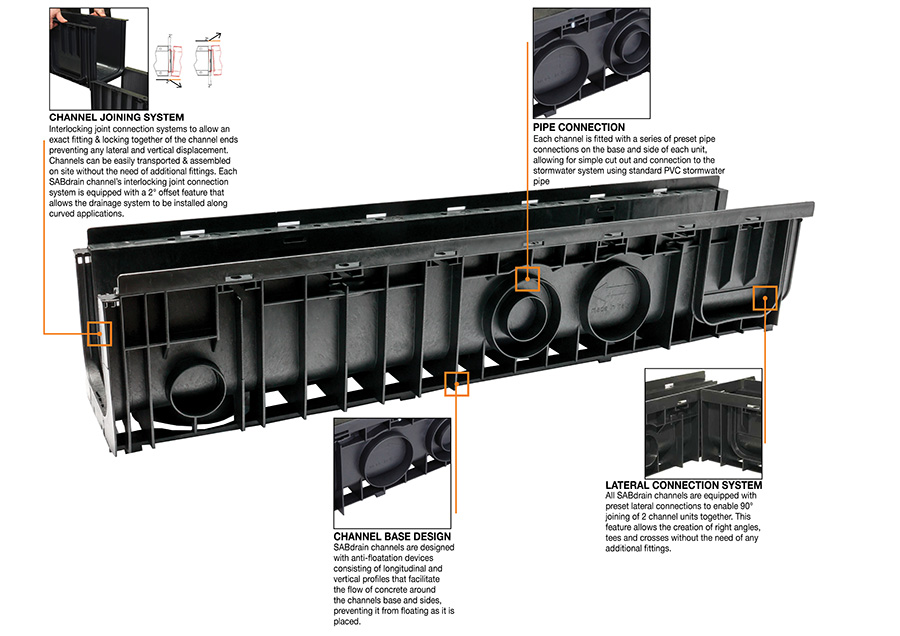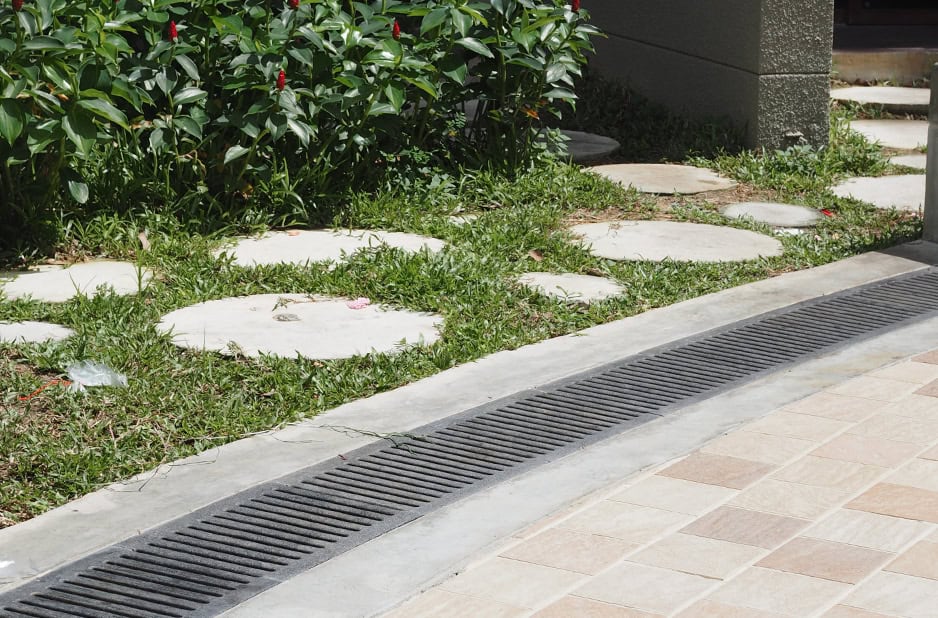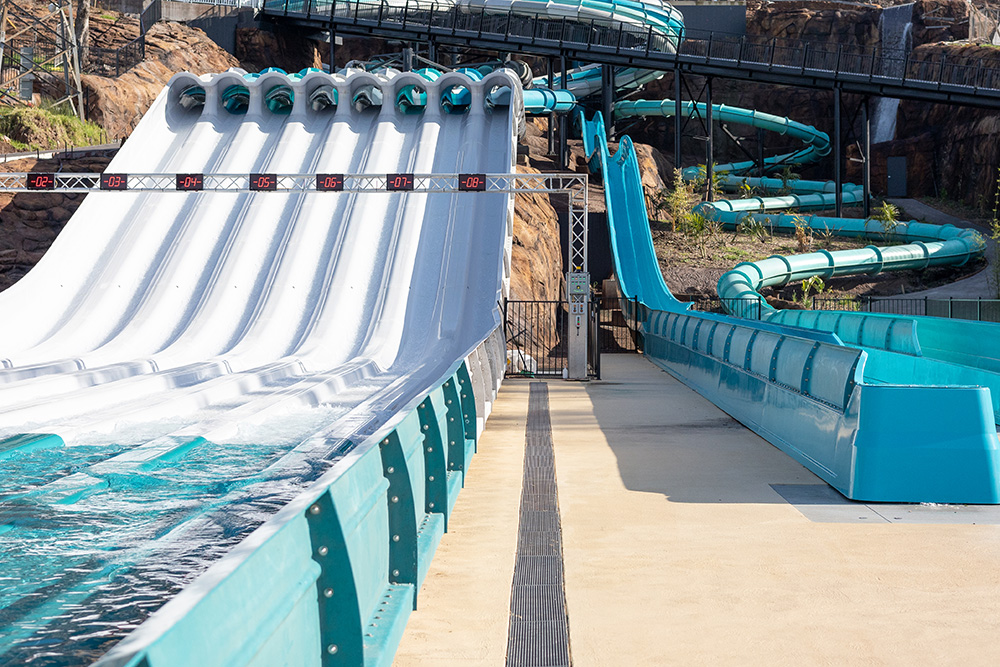Channel drainage, also known as trench drains or linear drains, is a versatile solution designed to manage surface water by directing it away from driveways, patios, walkways, and other areas prone to flooding. Whether you’re managing rainwater runoff in residential, commercial, or industrial settings, channel drainage systems offer efficient water management while maintaining functionality and aesthetics.
In this guide, we’ll cover everything you need to know about channel drainage systems, from understanding the different types available to tips on installation and maintenance.
Types of Channel Drainage Systems
Choosing the right material for your channel drain is essential. Polypropylene is increasingly popular due to its balance of durability, chemical resistance, and easy installation.
Common Channel Drain Materials
- PolypropyleneLightweight, durable, and highly resistant to chemicals and UV exposure. Its ease of installation makes it perfect for both residential and commercial projects.
- Polymer ConcreteA heavy-duty option, best for high-load areas. However, it’s heavier and less flexible than polypropylene.
- Stainless SteelIdeal for high-traffic or industrial areas, offering excellent corrosion resistance and a sleek, modern appearance.
Polypropylene’s versatility & performance make it the go-to choice for many drainage projects. Learn more about why polypropylene is an excellent choice for channel drains in our detailed article on polypropylene benefits.

SABdrain Channel Advantages
How to Choose the Right Channel Drain for Your Project
When selecting a channel drain, several factors come into play
- ApplicationWhether the drain will be used in a residential driveway, commercial parking lot etc.
- Load ClassHow much weight will the channel need to support- light pedestrian traffic or heavy vehicles
- Aesthetics
To learn more about how to make the best choice, check out our full guide on choosing the right channel drain for your project here.
Benefits of Installing Channel Drainage
Installing a channel drainage system provides several key benefits:
- Preventing FloodingBy directing surface water away from high-traffic areas, channel drains prevent pooling and potential damage.
- Durable SolutionsWith high quality materials like polypropylene, the drains can easily withstand harsh conditions.
- Aesthetic OptionsModern designs offer both function and style, blending into the surrounds
For a deeper look into how channel drains can protect and enhance your property, read our article about the benefits of installing channel drainage here.
Step by Step Guide to Installing Channel Drains
Installing channel drains may seem complex, but with the right approach, it can be a manageable task. Here’s a quick overview:
- 1. Plan the drainage pathIdentify water flow areas and the best location for the drain.
- 2. Excavate the trenchDig according to the necessary slope for water flow.
- 3. Install the channelPosition the drain and secure it with surrounding concrete or gravel.
- 4. Connect to the main drainage systemEnsure proper linkage to prevent blockages.
For detailed, step-by-step instructions, visit our complete guide to installing channel drains here. For SABdrain channels, visit our installation page for more information.
Channel Drainage Maintenance & Care
To keep your channel drainage system functioning effectively, regular maintenance is essential. This includes:
- Routine cleaningClear debris such as leaves, first and other blockages that could obstruct water flow
- Periodic inspectionsCheck for signs of wear, cracks or damage that may need attention
For more information on how to properly care for your system, explore our channel drainage maintenance guide here.
Comparing Channel Drains vs Slot Drains
Both channel drains and slot drains are effective for managing surface water, but they serve different purposes. Here’s a quick comparison:
- Channel DrainsBest for larger areas with higher water volumes. The wider grates provide greater surface area for water intake.
- Slot DrainsSleeker, more discreet option, ideal for areas with lighter water flow requirements
If you’re deciding between the two, check out our comparison of channel drains and slot drains in this detailed guide.
Choosing Suitable Grates
Grates are a critical component of any channel drainage system, both for functionality and aesthetics. Selecting the right grate depends on the project’s specific needs, including load requirements and environmental conditions. Here are the most common options:
- Polypropylene GratesLightweight, durable & cost effective
- Stainless Steel GratesModern and corrosion resistant
- Cast Iron GratesExtremely durable and designed for high load environments
- Galvanised Steel GratesCost effective, durable & aesthetic
To help you choose the right grate for your project, check out our guide to selecting channel drain grates here.
Channel drainage systems provide an essential solution for managing surface water, preventing floods, and enhancing the aesthetic of outdoor spaces. By understanding the various materials, installation processes, and maintenance requirements, you can ensure your channel drainage system is built to last.
For more in-depth information on any of these topics, visit the linked guides and articles throughout this post. Ready to get started on your project? Explore our range of drainage systems or contact our team for advice here.

